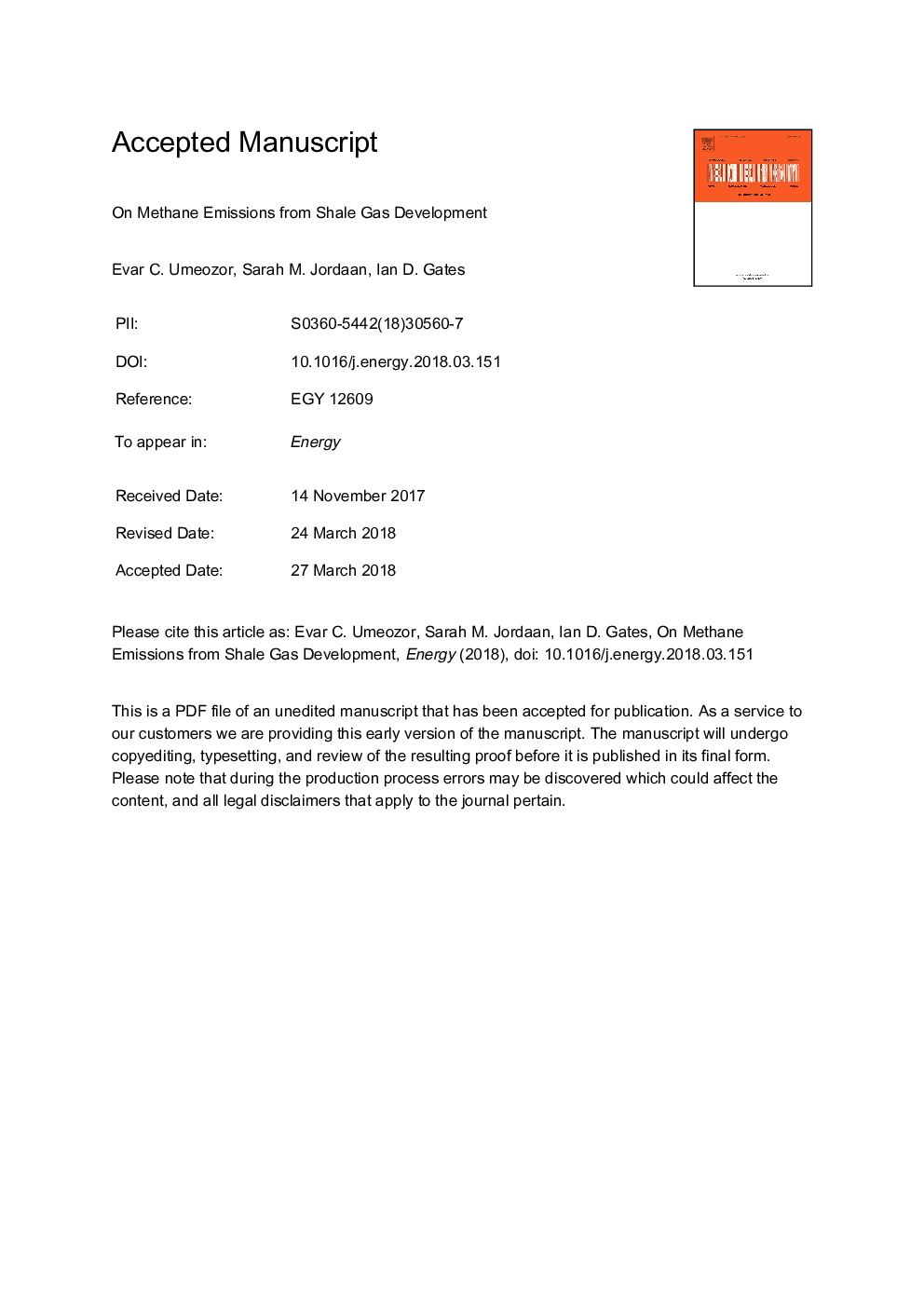| Article ID | Journal | Published Year | Pages | File Type |
|---|---|---|---|---|
| 8071688 | Energy | 2018 | 28 Pages |
Abstract
Environmental and economic impacts of methane escaping from the natural gas supply chain remain uncertain. Flowback emissions from hydraulically fractured natural gas wells are a key component of emissions from unconventional gas wells. While reduced emission completions in the United States are required by regulation, Canada's proposed regulation will only be implemented in 2020 with the two highest producing provinces under exemption. To understand potential benefits of regulations, we use predictive modelling of well-level production data of 1633 hydraulically fractured shale gas wells in five plays to estimate pre-production emissions. The mean estimate for flowback emissions (2346â¯Â±â¯95% confidence interval of 91â¯Mg CO2e/completion) fall within the 95% confidence limits of measured potential emissions (2566â¯Â±â¯777â¯Mg CO2e/completion). Our results indicate that in 2015, the average emissions per shale gas well undergoing flowback was 2347â¯Mg CO2e/completion in the U.S. and 1859â¯Mg CO2e/completion in Canada. Mean potential profits from controlling methane emissions using reduced emission completions were US$17,200/well in the U.S. and US$11,200/well in Canada.
Related Topics
Physical Sciences and Engineering
Energy
Energy (General)
Authors
Evar C. Umeozor, Sarah M. Jordaan, Ian D. Gates,
